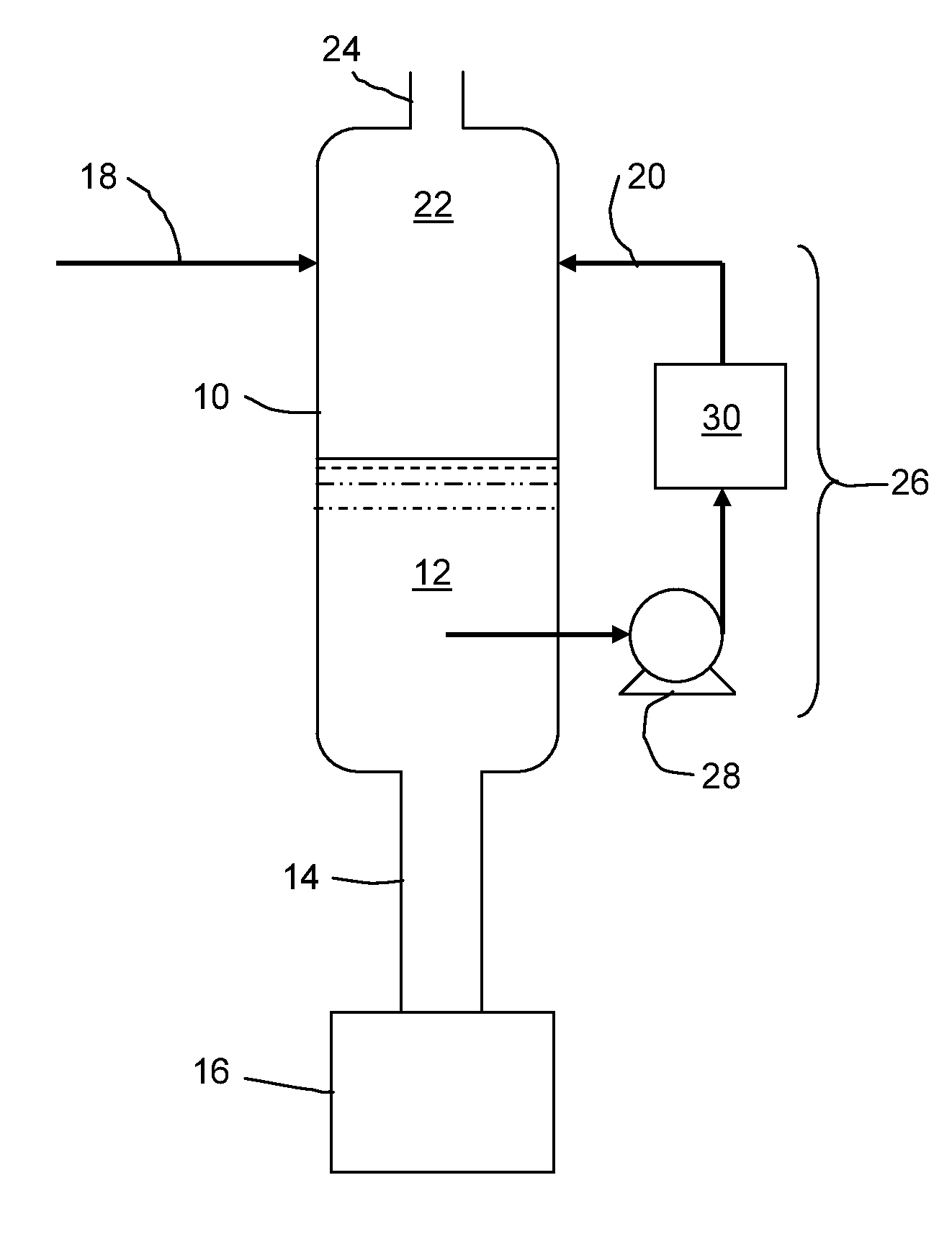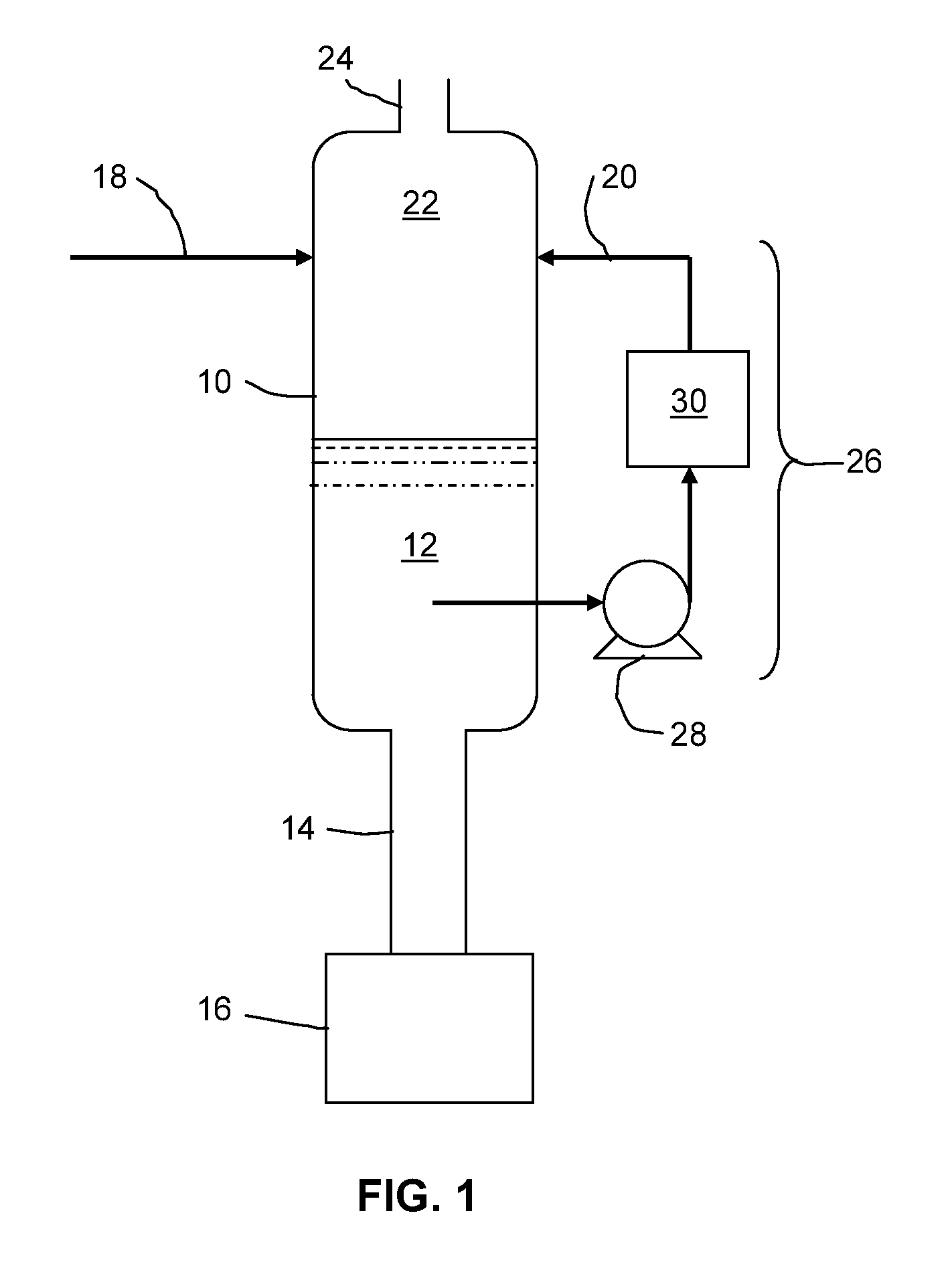Short contact, elevated temperature meg reclamation
a technology of meg reclamation and short contact, applied in the field of process, can solve the problems of significant meg loss, environmental impact, and increased corrosion rate from the handling of waste products, and achieve the effects of reducing the number of meg losses
- Summary
- Abstract
- Description
- Claims
- Application Information
AI Technical Summary
Benefits of technology
Problems solved by technology
Method used
Image
Examples
Embodiment Construction
[0012]The method relates to a process where a hydrocarbon stream (or other non-volatile fluid) is employed to provide the heating duty to vaporize the MEG and water components of the feed. It has been discovered that MEG degradation is not instantaneous, and it has been further discovered that a flash separator vessel can be operated at higher pressures without any significant observed increase in MEG degradation products provided that the residence time of the MEG in the flash separator vessel is kept to a minimum. Tests have been carried out at atmospheric pressure, and higher pressure operation in principle should also be achievable.
[0013]This finding allows the flash separator vessel to operate at pressures above the currently recognized range of 0.1 to 0.3 barA (0.01 to 0.03 MPa); alternatively where the pressure is atmospheric and above; and in a different non-limiting embodiment where the pressure is from about atmospheric plus 5 psi (1.34 barA), and therefore at temperatures...
PUM
| Property | Measurement | Unit |
|---|---|---|
| Temperature | aaaaa | aaaaa |
| Temperature | aaaaa | aaaaa |
| Temperature | aaaaa | aaaaa |
Abstract
Description
Claims
Application Information
 Login to View More
Login to View More - R&D
- Intellectual Property
- Life Sciences
- Materials
- Tech Scout
- Unparalleled Data Quality
- Higher Quality Content
- 60% Fewer Hallucinations
Browse by: Latest US Patents, China's latest patents, Technical Efficacy Thesaurus, Application Domain, Technology Topic, Popular Technical Reports.
© 2025 PatSnap. All rights reserved.Legal|Privacy policy|Modern Slavery Act Transparency Statement|Sitemap|About US| Contact US: help@patsnap.com


